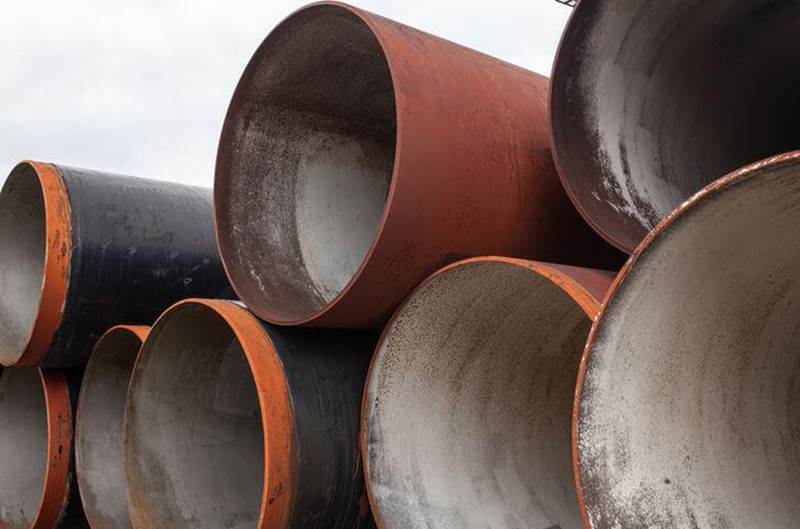What is a pipeline rehabilitation?
Pipeline rehabilitation is the process of trenchless sewer repair which is a broken pipeline such that it once again possesses the necessary qualities to fully fulfill its purpose, in circumstances comparable to those that existed prior to the failure.
Anomalies, such as a lack of sealing in the joints or wells, fissures, cracks, breaks, and incrustations, may appear while operating a network and may need to be repaired.
Recent investigations have revealed that some businesses with expertise in the upkeep of water networks still strongly favor the use of conventional rehabilitation procedures, such as trenching operations.
However, significant cost savings, carbon emission reductions, and avoiding disruptions to social and economic activities taking place on the ground in metropolitan areas frequently prompt the adoption of remediation procedures. Not a ditch
What circumstances warrant choosing trenchless pipeline rehabilitation?
We have outlined in great detail the several benefits of pipeline restoration procedures that don’t require trenching in earlier publications. When selecting these technologies, one should consider a number of things, including:
Cost: Compared to regular pipe work, trenchless sewer repair requires more expensive equipment.
However, on a worldwide scale, rehabilitation or renovation techniques will be less expensive than conventional replacement, and it is crucial to calculate what proportion of the expenses of the various existing systems trench replacement will constitute.
Environmental impact of the work: Trenchless work techniques are more advantageous in urban areas than in rural areas that are not yet urbanized because there is no need to rebuild the pavement when a trench is opened in urban areas.
Additionally, these methods might call for some extra drilling with the possibility of rehabilitation if personnel do not first need to confirm damage to nearby gas, power, or other lines.
Similar to this, it could be necessary to remove any shrubs, trees, or other landscaping elements from the site before starting the rehabilitation procedure.
Time requirements for the work’s completion: The speed at which the work is completed is frequently a deciding factor. Depending on the system employed, rehabilitation or renewal systems typically offer quicker completion timeframes than traditional replacement.
A variety of technical limitations: Each task has unique technical limitations that must be properly evaluated, such as the presence of connections, piercing derivations, the requirement to expand the diameter, and sanitary compliance. Your pipes might also be too old for renovation, which would increase the expense.
In any event, as the choices for replacing or rehabilitating trenchless water networks call for specialized knowledge, the best advise is to look for businesses like NETJET. Please don’t hesitate to get in touch with us if you want more details about any of the numerous connected services we offer.
What kinds of sewers exist?
Today, you can discover that you need to install a specific model of sewer while organizing a construction project for a house or any other facility, so you must choose it among the many different varieties of sewers that are available.
Because it directly depends on the location’s physical features, the volume of water that travels through the sewage system, etc., the wastewater system is not always carried out in the same manner.
Choose the sewer type that best meets your needs.
The following stand out among the common sewage kinds that you can currently find in a building:
Principal drains
These are the sewer replacement kinds that serve the purpose of providing an outlet for pipes and sewers to waters that have some hazardous component, like those that arise from industrial activities and through which excrement pass. Even the drainage of chemical components and detergents is installed with some of these drains.
These sewers can be found in a variety of places, including urinals, toilets, kitchen sinks, dishwashers, cesspools, and more. Additionally, they are put in the drainage and ventilation pipes as well as the water pumping machinery.
They are unique in that they accept items that must be removed quickly, hence they include an automatic download mechanism for the cleaning procedure. They have a hydraulic sealing system that ensures the pipe’s utmost hermeticity.
Auxiliary drains
Drains that are designed to remove water used for washing and personal hygiene in a home or other area fall under this category.
They consist of pipes and a few accessories that connect to the primary system directly and exit into the sewer in this manner. They are typically found in bathtubs, washing machines, bidets, and sinks. Even the ones in the floor grates and showers belong to them.
Storm sewers
They are in charge of gathering rainwater and guiding it into the sanitation pipe systems so that it can pass through the sewage network, as their name suggests. In order to divert the water toward the sewer, they are also employed to collect it from the roadway.
This kind of sewer can be found on sidewalks, attics, terraces, and street sides.
All of this water eventually ends up at one of three ultimate locations: a network for evacuating rainwater separate from the sewage system; a method for evacuating water through ditches, canals, or gardens; or mixed sewers, which may drain both rainwater and wastewater simultaneously.
Any sewer system that is installed need ongoing maintenance to ensure that it is operating effectively and preventing potential clogs and other issues common to these components.

